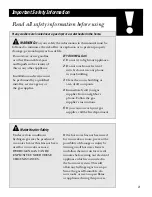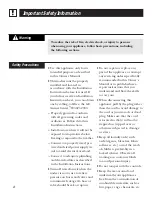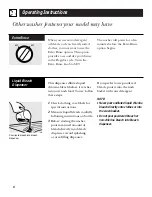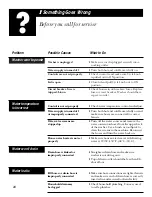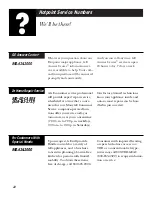
Load dry items loosely, spacing even-
ly around agitator, and close the lid.
A typical wash load: two twin sheets,
two pillow cases, three small bath
towels, three wash cloths and two
t-shirts.
Place large items in bottom, small
items in the middle and medium
items on top.
When loading wet items make
sure you set the load/water level
high enough to allow the items to
move freely.
Wash bulky items like blankets
separately.
To add items after washer has
started, push in Cycle knob and
submerge additional items next to
the agitator. Close the lid and pull
Cycle knob out to restart.
To reduce wrinkling, give
permanent press items, synthetics
and poly knits room to move freely
in the washer.
NOTE:
•
Do not wrap large items like sheets
around the agitator.
•
Do not wash fabrics containing
flammable materials (waxes, clean-
ing fluids, etc.) in your washer.
Load
Leave the lid open after washing
to allow moisture to evaporate. The
wash basket is practically care free.
If you want to clean the basket use
a clean soft cloth dampened with
liquid detergent, then rinse. (Do
not use harsh or gritty cleaners.)
To rinse:
1
Choose the largest load size.
2
Turn the Cycle knob to any
rinse setting.
3
Start washer.
Fill Hoses—
Hoses connecting wash-
er to faucet should be replaced
every five years.
Lint Filter—
The lint filter is located
under the agitator. It is self cleaning
and requires no maintenance.
Exterior—
Immediately wipe off any
spills. Wipe with damp cloth. Try
not to hit surface with sharp objects.
Moving and Storage—
Ask the service
technician to remove water from
drain pump and hoses. Do not store
the washer where it will be exposed
to the weather. Call the GE Answer
Center
®
800.626.2000 for informa-
tion on how to keep the tub station-
ary when moving the washer.
Long Vacations—
Be sure water
supply is shut off at faucets. Drain
all water from hoses if weather will
be below freezing.
The Washer
Care & Cleaning
11
Summary of Contents for VKSR2100T
Page 20: ...Notes 21 ...



